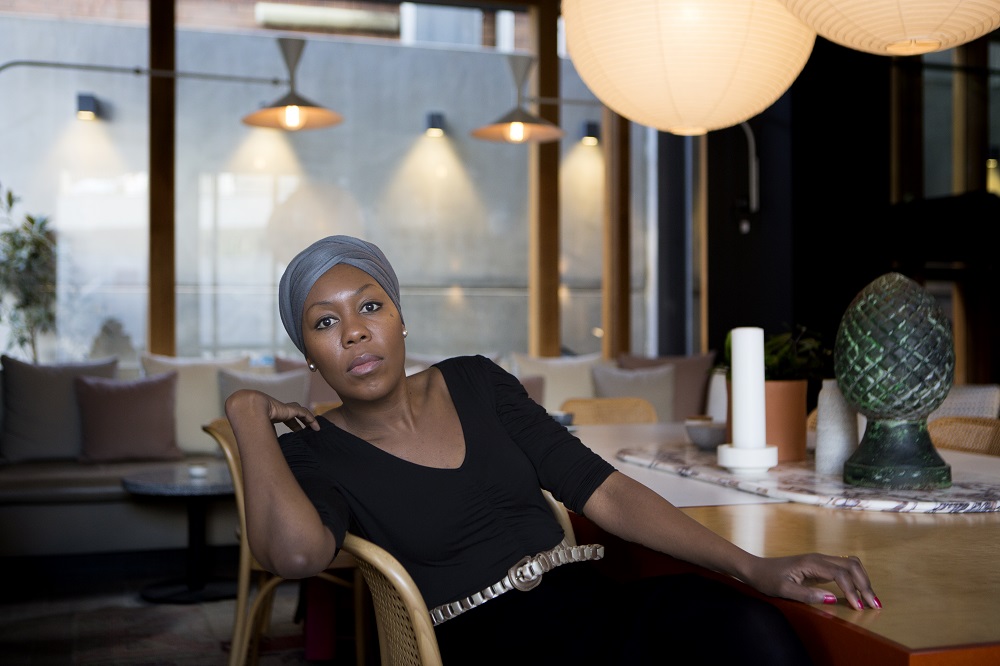“I don’t think I would have written the book if Winnie Mandela was still alive,”Sisonke Msimang says, speaking on the phone from Australia. Her latest release The Resurrection of Winnie Mandela is a provocative and questioning look at the life and death of Mam’ Winnie Madikizela-Mandela – and what this all says about post-apartheid South Africa. FATIMA MOOSA spoke to Msimang about what writing the book was like.
Sisonke Msimang Gives Winnie Madikizela-Mandela The Complexity She Deserves
Would the book have been different if Mam’ Winnie was still alive?
I don’t think I would written it if she was still alive. I was asked to write the book about Mam’ Winnie earlier in the year before she passed away and I said no because I thought she would still be around for awhile. That book would have been longer. I would have done a lot more interviews and travelled to a lot more places. While she was still alive I think we understood some of the polarities and divisions but I don’t think we understood how deep those ran until she was gone so it would have been a different book. That’s why I wrote it – as a response to what happened after her death.
What was the process of writing the book?
It included a lot of archival digging. My main resource was the Truth and Reconciliation Commission (TRC) documents. There are also a few texts you have to read if you want to get your head around Winnie Mandela’s life and those are the texts she herself produced: 491 Days and A Part Of My Soul Went With Him. I had read them in the past but I read them again with new eyes, and pulled a lot of her own words with her. If we want to understand her we have to think about how she herself described herself and the world around her. It was supposed to be an essay we published that would be easy for people to read but obviously it’s impossible to write about Winnie Mandela’s life in such a short time. I doubled the length and still felt I could have kept going.
Were you satisfied with the book?
I’m never satisfied with anything I do – and it’s not specific to this book. I was trying to do two things so I’m okay with it but it’s a work in progress. The first thing was to address a past political moment in the now by shining a spotlight on a particular woman and what she meant to the country. The second thing I was trying to do was grapple with the bigger storyline of everything I write about which is about the question of post-apartheid South Africa and the meaning of the transition. It allowed me to think about Winnie Mandela’s life not just as a black woman who was important and special – but also as a avatar and proxy of these bigger questions around violence, justice and the transitional compromises we made.
Talk me through your writing style.
I made the unusual choice to write a biography in the second person. In that intimate use of you I was hoping to create a sense of the reader being a voyeur and listening in on this intimate conversation between two black women. But the you can also be you yourself. I wanted the reader to imagine that they are Winnie Mandela. One of the things that happened to Winnie Mandela is that she was so demonised it was difficult for people to imagine themselves in her shoes so a part of the act of resurrecting her is to put yourself in her shoes. To be her and see what it would be like to her.
Celebrating Mam’ Albertina Sisulu In The Hundredth Year Of Her Birth
In terms of contested legacies how do we look at Mam’ Winnie and Mam’ Albertina?
Mam’ Sisulu is such an interesting character because she was banned more times than anyone in the struggle. She has a very similar trajectory to Winnie Mandela in many ways. What she didn’t have was the same amount of profile and defiance. She didn’t make people feel the same way as Winnie Mandela did for all kinds of reasons. Yet, they had this incredibly close relationship. The idea of a good woman versus a bad woman is so often an idea that is externally created and which the women don’t experience themselves. Mam’ Albertina helped Winnie Mandela when she was pregnant and detained in the 1950s. When it came to the difficult trial of Doctor Asvat and the TRC hearings, Mam’ Sisulu is visibly uncomfortable about what to say because this is her friend. There was a real understanding that the division was a set-up and not something real.
Who is the book for?
I write non-fiction for a reason – for the ideas that emerge in the process of my writing. I am not interested in an uncritical reading of my stuff. There are real and important questions in the book about Winnie Mandela and how we think about morality, who we choose as our leaders, legacies, Madiba and post-apartheid society. So I am interested in being read by people who are interested in those questions. I also want to engage with university and high school students









